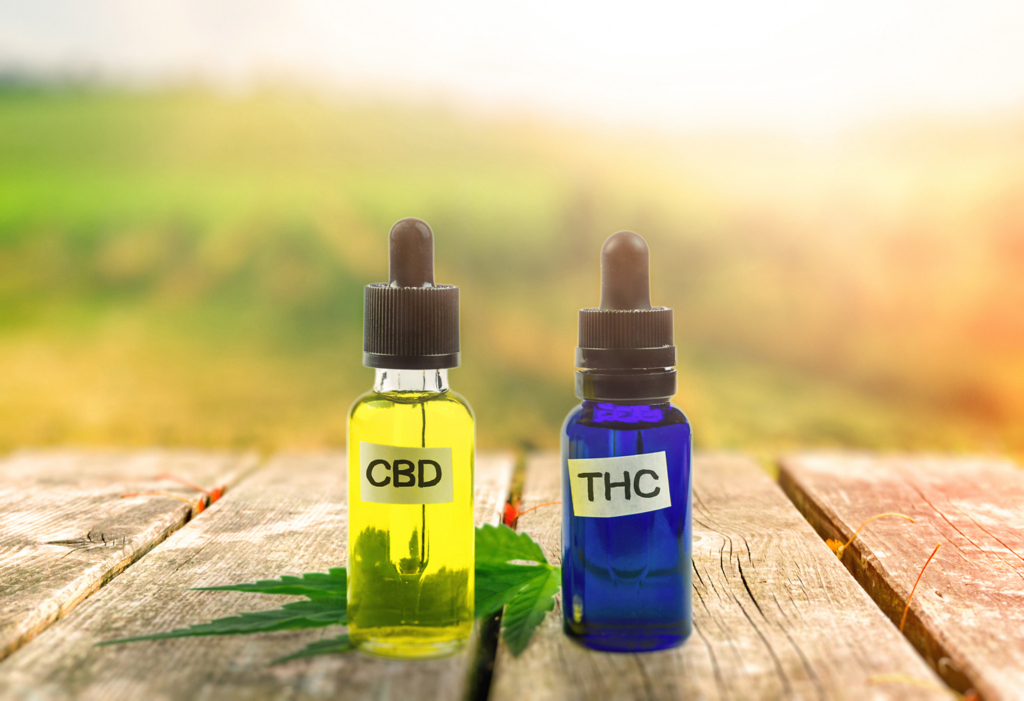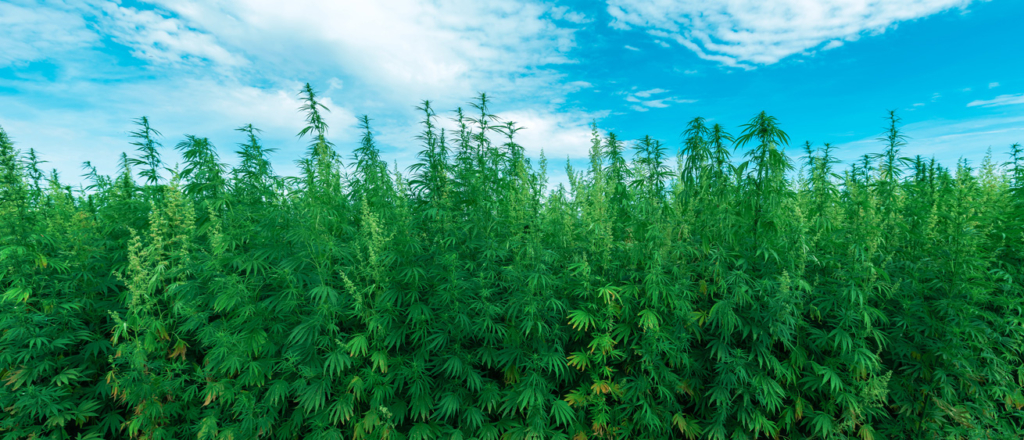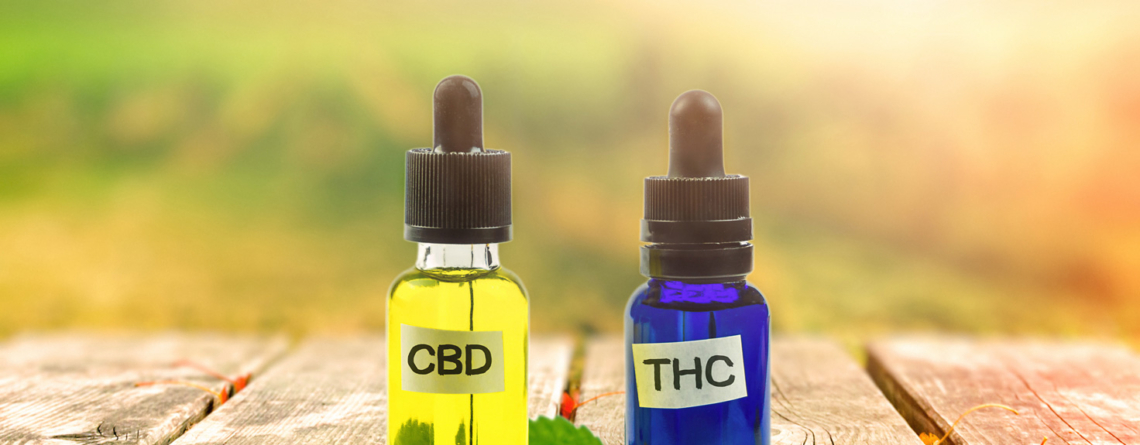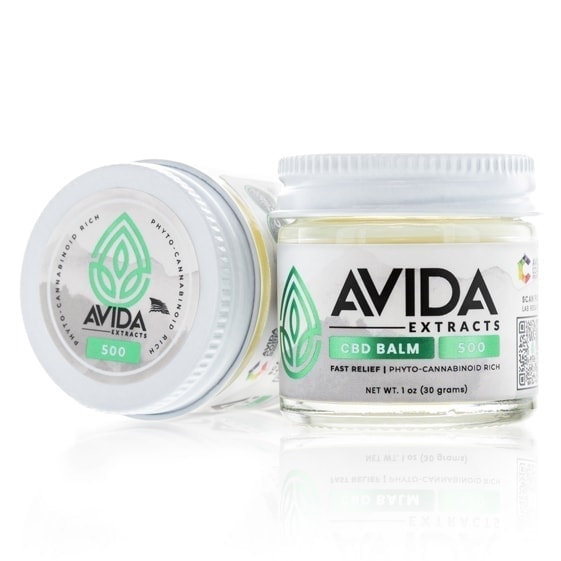CBD is one of over 100 cannabinoids found in the Cannabis sativa plant, and it’s present in both hemp and cannabis.
Hemp-derived CBD containing less than 0.3% THC is federally legal and most states. Cannabis-derived CBD, on the other hand, contains more than 0.3% THC and is federally illegal.
While CBD products derived from hemp can be purchased online and are available nationwide, CBD products derived from cannabis are limited to states with medical marijuana laws.
Here we’ll take a look at both to determine which may be the better choice for your personal wellness needs.
What You’ll Discover
- CBD from hemp and cannabis is the same molecule, but hemp CBD must contain 0.3% THC or less to be federally legal, while CBD from cannabis contains more than 0.3% THC and is considered a controlled substance.
- CBD is extracted from both hemp and cannabis using a variety of different extraction methods, including CO2, ethanol, solvents like butane, and more. It then goes through further processing to remove any unwanted plant compounds.
- It’s essential to purchase third-party tested products with a Certificate of Analysis (COA) that shows cannabinoid levels, as any CBD product with more than 0.3% THC is illegal under federal law.
CBD from Hemp vs. Cannabis Plants
 CBD (cannabidiol) is one of 125 cannabinoids in cannabis that have been discovered to date. It’s gained massive popularity over the past ten years for its potential therapeutic benefits.
CBD (cannabidiol) is one of 125 cannabinoids in cannabis that have been discovered to date. It’s gained massive popularity over the past ten years for its potential therapeutic benefits.
It’s present in both hemp and cannabis varieties of the cannabis sativa plant, but the source of CBD makes a big difference in terms of THC content and legality.
While hemp and cannabis are slightly different, the main difference between the plants can be found in their legal definitions.
According to federal law, hemp plants must contain no more than 0.3% THC [1]. Any cannabis plant that contains more than this amount is considered marijuana, which is sometimes referred to as cannabis.
While this distinction may seem small, it’s everything when it comes to distinguishing hemp-derived CBD products from recreational marijuana.
The Legal Landscape of Hemp CBD vs Cannabis CBD
The 2018 Farm Bill revolutionized the hemp industry. Not only did it legalize hemp, it legalized its cultivation and manufacturing of hemp-derived CBD products [1].
Under the Farm Bill, hemp-derived CBD products containing 0.3% or less THC on a dry weight basis became federally legal.
That said, any CBD product containing more than 0.3% THC is considered a controlled substance and is illegal at the federal level.
How CBD is Extracted From Cannabis
To become the CBD oil used in tinctures, edibles, vape pens, and other products, it must first be extracted from the cannabis plant itself.
CBD can be extracted from both hemp and cannabis using the following methods [2].
- CO2 extraction: This method involves using carbon dioxide (CO2) compressed into a supercritical state where CBD oil can then be extracted from the plant material.
- Solvent extraction: Using solvents such as butane, hexane, or propane, CBD is extracted from hemp or cannabis plants.
- Ethanol extraction: Extracting CBD with ethanol is done by soaking plant material in ethanol, which then evaporates to leave CBD oil.
- Oil extraction: Oil extraction, sometimes referred to as lipid extraction, involves using coconut or olive oil to extract CBD.
Hands down, CO2 extraction is the most popular method of pulling CBD from hemp and cannabis plants. It’s considered the most efficient and cleanest way to extract CBD and preserve cannabinoids, terpenes, and other beneficial plant compounds.
Solvent extraction is also common, however, involves further refinement to ensure no potentially harmful residual solvents are left in the oil.
Ethanol is often used, but not as commonly as CO2 or solvent extraction. Oil extraction is the least popular extraction method, typically reserved for individuals extracting their own CBD oil at home.
Understanding Cannabinoid Content
While there are well over 100 cannabinoids found in cannabis, cannabinoid content in hemp and cannabis varies. This is due to genetic profiles and factors like light, temperature, and nutrients used to cultivate cannabis plants.
Cannabinoids in both hemp and cannabis are initially formed as what’s known as cannabinoid acids. It’s only when they undergo a process known as decarboxylation, which uses heat, do they turn into active cannabinoids like CBD and THC.
Interestingly, cannabinoid content varies depending on whether cannabis is grown indoors or outdoors [3]. Research has discovered that outdoor cannabis plants have similar primary cannabinoid levels to indoor plants, however, contain higher levels of CBCA (cannabichromenic acid) and THCA (tetrahydrocannabinolic acid) [4].
This is important when it comes to understanding cannabinoid content because CBGA (cannabigerol acid) is the precursor to CBDA, CBDA, and CBCA. Once decarboxylated, these turn into the active forms CBD, THC, and CBC.
Female hemp plants are especially valued for extract production because of their higher cannabinoid content, as male plants don’t produce flowers that contain various cannabinoids [5].
How CBD Oil is Made
 The CBD oil products that are widely available go through an intricate process before becoming the wide array of products countless consumers use every day.
The CBD oil products that are widely available go through an intricate process before becoming the wide array of products countless consumers use every day.
The process begins with the cultivation of hemp strains bred to contain high levels of CBD. Typically, hemp seeds take 70-140 days to reach maturity, where they’re then harvested, dried, and cured before being extracted using the various methods mentioned above.
Once CBD oil is extracted, it goes through further refinement to remove any undesirable plant compounds such as chlorophyll, fats, and lipids. This results in a high-quality CBD oil, ready to be manufactured into various products.
How THC Concentration Impacts Potential Therapeutic Benefits
The concentration of THC in CBD products can significantly impact their potential benefits [6],[7]. While there is preliminary evidence that supports the potential of CBD to support a variety of conditions, there’s also evidence to support that THC may enhance CBD’s potential benefits.
A theory that suggests cannabis plant compounds like cannabinoids and terpenes may work harmoniously together to offer an enhanced effect compared to their isolated counterparts [8].
Although the legal limit of less than 0.3% THC might not seem like much, experts agree that it may help enhance the potential benefits of hemp CBD products.
Psychoactive vs. Non-Intoxicating Effects
Perhaps the most significant difference between hemp CBD and cannabis CBD is that hemp-derived CBD doesn’t contain the intoxicating effects associated with THC. This is because of the way THC and CBD interact with cannabinoid receptors, specifically the CB1 receptor [9].
THC has a high binding affinity to CB1 receptors, which mediates most of the psychoactive effects of THC. CBD, on the other hand, does not bind to CB1 receptors, which is why it doesn’t cause intoxication [10].
There’s also evidence to suggest CBD may reduce some adverse effects.
Despite the fact that THC causes psychoactive effects, some consumers prefer THC products because of their potential therapeutic effects.
How to Choose High-Quality CBD Products

Not all CBD products are created equal, and knowing what to look for when choosing high-quality CBD is paramount to a positive experience.
The best CBD comes from organically grown, CBD-rich hemp plants known for their high quality and potency. When choosing CBD products, it’s recommended to purchase from brands that offer information about how and where the hemp plants used to create their products are grown.
Because the hemp industry is, to an extent, still unregulated, the only way to determine what’s in your products is through third-party lab testing. It’s not required, but reputable, trustworthy brands will offer lab reports for all their products.
Unfortunately, discrepancies have been found in many CBD products, with actual CBD levels not matching those advertised on the label. Lab reports testing for potency ensures that your product contains what’s listed on the label and that it contains less than the legal limit of 0.3% THC.
Some brands take testing a step further and test for potential contaminants, as well. These are known as full-panel lab tests and ensure CBD products are free from things like heavy metals, residual solvents, pesticides, microbes, mold, and more.
Third-party lab test results are typically offered in what’s known as a Certificate of Analysis (COA). Most brands will include COAs on their website or the product page itself. If you find a CBD product you’re interested in that hasn’t been third-party tested, we recommend you look for another product that has.
Hemp vs. Cannabis CBD
Both hemp CBD and cannabis CBD contain potential benefits that are used for various conditions.
Currently, Epidiolex is the only CBD-derived medication approved by the FDA. It’s used to treat seizures associated with rare, intractable epilepsy conditions known as Lennox-Gastaut syndrome and Dravet syndrome [1].
CBD derived from cannabis contains more than the federally legal limit of 0.3% THC. It’s available in states that have passed recreational or medical marijuana laws.
These types of CBD products typically contain a balanced THC/CBD ratio or high-CBD, low-THC content. Keep in mind, however, that cannabis-derived CBD with more than 0.3% THC is federally illegal.
While CBD is considered safe, it may cause side effects in some users. The most common side effects experienced with CBD use include dry mouth, diarrhea, drowsiness, reduced appetite, and weight loss [13].
CBD can also cause drug-drug interactions due to the way it interacts with CYP enzymes. Taking CBD with certain medications may reduce their effects [14]. This is why it’s always recommended to speak with a healthcare provider before taking hemp-derived or cannabis-derived CBD if you take other medications.
Wrapping Up
At the end of the day, both hemp and cannabis CBD have their unique potential benefits. Understanding the differences between the two, including their THC content, extraction methods, cannabinoid profiles, and legality, is vital when choosing CBD products.
Keep in mind that while hemp-derived CBD is federally legal, cannabis-derived CBD is federally illegal and only permitted for use in states with medical marijuana legalization or where cannabis is legal for recreational use.
Despite whether CBD comes from hemp or cannabis, it’s vital to purchase high-quality, third-party lab-tested products derived from organically grown cannabis plants.
Frequently Asked Questions
Is cannabis CBD the same as hemp CBD?
Cannabis CBD is different than hemp CBD, as it’s derived from cannabis (marijuana) plants and contains more than the federally legal limit of 0.3% THC. Hemp CBD is derived from hemp plants that contain less than 0.3% THC.
Does CBD have the same psychoactive effects as cannabis?
No, CBD does not have the same psychoactive effects as cannabis. This is because it doesn’t bind to the CB1 cannabinoid receptor responsible for the intoxicating effects of cannabis.
Are hemp-derived CBD products legal?
Yes, hemp-derived CBD products with 0.3% or less THC are federally legal under the 2018 Farm Bill.
How is CBD extracted from hemp and cannabis plants?
CBD is extracted from hemp and cannabis plants using various methods like CO2 extraction, solvents such as butane and propane, ethanol, and oil extraction. Meticulous extraction using advanced techniques ensures high-quality CBD and controlled THC levels.
References
[1] US FDA 2024, FDA Regulation of Cannabis and Cannabis-Derived Products, Including Cannabidiol (CBD). https://www.fda.gov/news-events/public-health-focus/fda-regulation-cannabis-and-cannabis-derived-products-including-cannabidiol-cbd. Accessed on March 19, 2024
[2] Lazarjani MP, Young O, Kebede L, Seyfoddin A. Processing and extraction methods of medicinal cannabis: a narrative review. J Cannabis Res. 2021;3(1):32. https://pubmed.ncbi.nlm.nih.gov/34281626/
[3] Swift W, Wong A, Li KM, Arnold JC, McGregor IS. Analysis of cannabis seizures in NSW, Australia: cannabis potency and cannabinoid profile. PLoS One. 2013;8(7):e70052. https://pubmed.ncbi.nlm.nih.gov/23894589/
[4] Zandkarimi, F., Decatur, J., Casali, J. G., Gordon, T., Skibola, C. F., & Nuckolls, C. (2023). Comparison of the Cannabinoid and Terpene Profiles in Commercial Cannabis from Natural and Artificial Cultivation. Molecules, 28(2), 833. https://doi.org/10.3390/molecules28020833
[5] Glivar, T., Eržen, J., Kreft, S., Zagožen, M., Čerenak, A., Čeh, B. and Benković, E.T., 2020. Cannabinoid content in industrial hemp (Cannabis sativa L.) varieties grown in Slovenia. Industrial crops and products, 145, p.112082. https://doi.org/10.1016/j.indcrop.2019.112082
[6] Freeman, A. M., Petrilli, K., Lees, R., Hindocha, C., Mokrysz, C., Curran, H. V., Saunders, R., & Freeman, T. P. (2019). How does cannabidiol (CBD) influence the acute effects of delta-9-tetrahydrocannabinol (THC) in humans? A systematic review. Neuroscience & Biobehavioral Reviews, 107, 696–712. https://doi.org/10.1016/j.neubiorev.2019.09.036
[7] Abrams, D. I. (2018). The therapeutic effects of Cannabis and cannabinoids: An update from the National Academies of Sciences, Engineering and Medicine report. European Journal of Internal Medicine, 49, 7–11. https://doi.org/10.1016/j.ejim.2018.01.003
[8] Ferber, S. G., Namdar, D., Hen-Shoval, D., Eger, G., Koltai, H., Shoval, G., Shbiro, L., & Weller, A. (2020). The “Entourage Effect”: Terpenes Coupled with Cannabinoids for the Treatment of Mood Disorders and Anxiety Disorders. Current Neuropharmacology, 18(2), 87–96. https://doi.org/10.2174/1570159×17666190903103923
[9] Mackie, K. (2006). Mechanisms of CB1 receptor signaling: endocannabinoid modulation of synaptic strength. International Journal of Obesity, 30(S1), S19–S23. https://doi.org/10.1038/sj.ijo.0803273
[10] Zlebnik NE, Cheer JF. Beyond the CB1 Receptor: Is Cannabidiol the Answer for Disorders of Motivation?. Annu Rev Neurosci. 2016;39:1-17. https://pubmed.ncbi.nlm.nih.gov/27023732/
[11] Niesink RJ, van Laar MW. Does Cannabidiol Protect Against Adverse Psychological Effects of THC?. Front Psychiatry. 2013;4:130. https://pubmed.ncbi.nlm.nih.gov/24137134/
[12] Peng J, Fan M, An C, Ni F, Huang W, Luo J. A narrative review of molecular mechanism and therapeutic effect of cannabidiol (CBD). Basic Clin Pharmacol Toxicol. 2022;130(4):439-456. https://pubmed.ncbi.nlm.nih.gov/35083862/
[13] Huestis, M. A., Solimini, R., Pichini, S., Pacifici, R., Carlier, J., & Busardò, F. P. (2019). Cannabidiol adverse effects and toxicity. Current Neuropharmacology, 17(10), 974–989. https://doi.org/10.2174/1570159×17666190603171901
[14] Balachandran, P., ElSohly, M. A., & Hill, K. P. (2021b). Cannabidiol Interactions with Medications, Illicit Substances, and Alcohol: a Comprehensive Review. Journal of General Internal Medicine, 36(7), 2074–2084. https://doi.org/10.1007/s11606-020-06504-8





